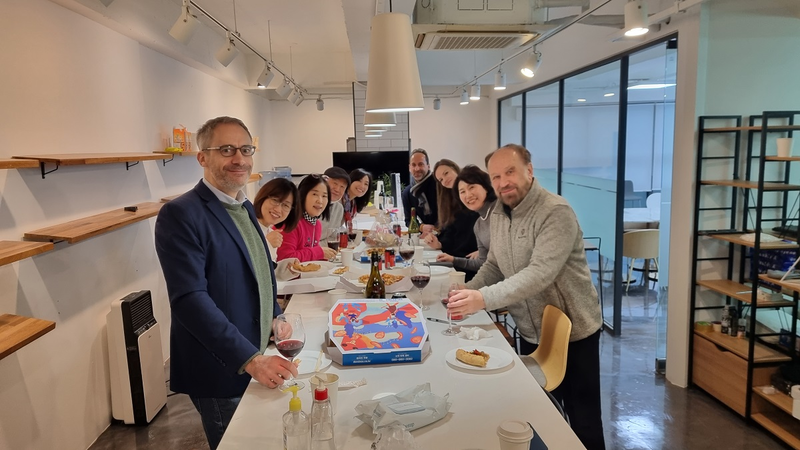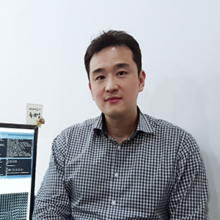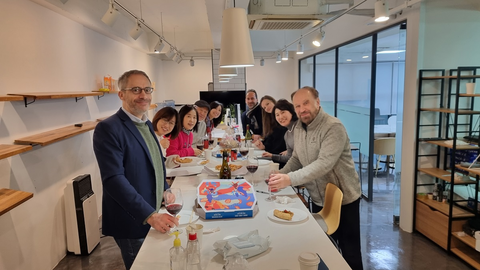Published
As Korea welcomes a growing number of international students through language and exchange programs, one of the least discussed yet most impactful aspects of their experience remains housing.
At GIAI Korea, a research institute affiliated with GIAI in Europe and The EduTimes education news magazine, we are currently collaborating on a deeper exploration of what life is really like for these students—not in the classroom, but in their homes.
To support this, I will be hosting two small, private discussion forums in April at our Gangnam office. These sessions will provide a space for current students to reflect on their housing experiences in Korea—and how they compare to life abroad.
Before sharing the event details, I want to tell you why this topic matters to me.
My Own Housing Story
Back in the summer of 2005, after completing my mandatory military service, I was looking for housing near my university, Seoul National University(SNU). The common choices were neighborhood around Shillim or SNU Station, but I chose Nakseongdae Station, hoping to avoid late-night drinking invitations from friends and focus on studying.
Unfortunately, most one-rooms (small studios) were outside my budget—and even the affordable ones were shockingly small. As anyone living in Korea knows, private rooms with shared amenities simply don't exist here. We Koreans value privacy deeply (just for housing), and it shows in our housing culture.
That first night in the one-room, I felt almost like I was in prison. Just a few nights before, I had been living in a U.S. Army barracks as a KATUSA (Korean Augmentation to the U.S. Army). We shared bathrooms and occasionally ordered pizza or played video games together. I don’t miss my military service—no Korean man does—but I did miss the sense of shared time with others. We Koreans often call Korean Army a prison, but I felt prison in the one-room, right after the millitary service. What an irony!
Still, I gradually got used to it. I’m Korean, after all. I enjoy privacy at home. And I could always meet friends nearby if I wanted. Just different style of life, with litte more emphasis on privacy in housing. Eventually, after I began working, I moved into a 60㎡ apartment. It was slightly over my budget, but I wanted a space where I could fully relax. That small 20㎡ one-room had begun to feel almost claustrophobic.
Later, during my graduate studies in London, I faced the same housing decision again. Central London studios were well beyond my budget. Fortunately, I was accepted into the Goodenough College dorms, which offered a private room at a surprisingly affordable rate. It had all I needed: a bed, a desk, and a half-size fridge. (And, it was still larger than my college day's one-room.) The room itself was small, but the building offered high ceilings, two dining halls, and communal activities. I spent most of my days in the library, so I didn’t mind the modest room. What mattered was that I could still meet people in shared spaces and feel connected.
In my second year, I moved into a shared house. For a Korean, the idea of less privacy was initially a concern—but I ended up enjoying the shared weekends with my flatmates.
When I later moved to Boston for my PhD, I had a bit more flexibility in terms of housing budget (and housing costs there were far lower than in London). I chose a studio again, partly because I’m Korean and tend to value privacy more.
My lab mates even joked that I should bring a sleeping bag to the department instead of paying for pricy studio, given my lifestyle. And honestly, every time I paid monthly rent, I found myself looking for more economical options—something close to a small (thus cheaper) Korean one-room, but definitely not a private room in a shared house.
From this, I think you can see why one-rooms and officetels are so popular in Korea.
Why This Forum Now?
Not long ago, I met a German student at Frankfurt Airport who was on her way to Korea to join Yonsei’s Korean Language Institute. She seemed excited, ready for cultural immersion and life in Seoul. I didn’t think much of it at first—like many Koreans, I had long assumed that language students weren’t here for serious study.
That perception, I now realize, was heavily influenced by my own experience in the military. As a KATUSA, I often saw U.S. soldiers in Itaewon and Hongdae, behaving in ways that left strong, negative impressions on locals. And admittedly, I subconsciously associated that same image with foreign students in Korea—people more interested in partying than learning.
But as I helped that student navigate transportation options in Seoul, I began to wonder: Where is she going to live?
After a little research, I discovered that the overwhelming majority of foreign language students end up in tiny, 15㎡ studios in neighborhoods like Sinchon and Hongdae. These neighborhoods, ironically, are believed to offer cultural immersion, but they are far from welcoming when it comes to housing standards. (Back in my college days, as said earlier, I thought my 20㎡ studio was already a prison.)
Looking back at my own time in Boston, I used to wish for a one-room—because I didn’t need roommates or cultural exchange. But I now realize that students like her are likely looking for the exact opposite. And unlike exchange students who stay for at least a semester, language students on shorter 1–3 month stays are left with even fewer housing options.
That’s what sparked this project. When Lauren Robinson, Vice Editor at The EduTimes, asked if I could help host a housing forum in Korea, I agreed to run it, almost right away. Not only because GIAI, the mother institution of GIAI Korea, is a content partner of The EduTimes, but because I genuinely want to understand what these students are going through.
I’ve shared my experience. Now, I hope to hear yours.

🗓️ Event Details
We are inviting up to 10 participants per session to join a private, off-the-record roundtable discussion on housing experiences in Seoul. Light refreshments will be served.
- Friday, April 12 – Language School Students (e.g., Yonsei KLI, Sogang KLEC)
- Saturday, April 13 – Exchange Students (1 semester or longer)
For each event
- Time: 7:00–9:00 PM
- Location: GIAI Korea Reception Room (Gangnam, Seoul – address upon confirmation)
- Host: GIAI Korea, on behalf of The EduTimes
🧾 Who Should Apply?
We’re looking for students who:
- Are currently living in a one-room or officetel in Seoul, and
- Have previously lived in a private room within a shared flat or house, ideally in Europe or North America
This discussion will focus on the emotional and cultural transition between those two housing styles.
✍️ How to Participate
Please send a short written reflection (200–300 words) to [email protected] by Monday, April 8. Choose one of the following prompts:
- What surprised or frustrated you most about finding housing in Korea?
- If you could redesign student housing in Korea, what would it look like?
All questions or inquiries should be sent to us ([email protected]), but final essay submissions should be sent directly to [email protected], where The EduTimes editorial team will review applications.
- Meet up link: https://www.meetup.com/forum-real-talk-on-student-housing-in-seoul/events/307007701/
- Reddit post to r/yonsei subreddit: Private Forum Invitation - Real Talk on Student Housing in Seoul : r/yonsei
A Final Note
This is not a survey. It’s not a promotional campaign. It’s an attempt to listen—to understand what living in Korea actually feels like for international students.
If you've ever wished your housing here were just a bit more livable, more social, or more aligned with your expectations—this is your moment to speak.
Side note:
As I mentioned in my Reddit comments, I believe I need to do more than just listen, collect, and pass along your stories to Lauren at The EduTimes. We Koreans have a responsibility to fix this.
Back in 2005, I spent a short time living just outside of Shinsekai, Osaka—an area known for having the cheapest accommodations in the city. The landlady, a Korean woman married to a Japanese man, told me she kept her prices low—not to compete with the slums, but because she didn’t want to see any Korean girl end up in a risky situation just for trying to save a few dollars per night.
After walking through Seoul’s Sinchon neighborhood recently, I finally understood what she meant. (To be clear, I’m not saying Sinchon is dangerous in the same way—just that the housing conditions for foreign students are often appallingly low, especially given what they expect from a cultural immersion experience.)
Ultimately, I hope to turn this effort into an official policy proposal to Korea’s Ministry of Culture, Sports and Tourism. The government spends enormous sums each year, yet much of it goes to the wrong places—like renovating remote tourist sites that no one visits. Instead, we should be investing in the neighborhoods where international students actually live. We need to offer safer, more livable, and more culturally compatible housing options—something closer to what students from the West are accustomed to. (Not 15㎡ capsule that none of us want our kids to live in.)
Your firsthand voices can inform The EduTimes' upcoming coverage—but more importantly, they can help us advocate for a better system. I want Korea to do better—for you, and for those who come after you.




